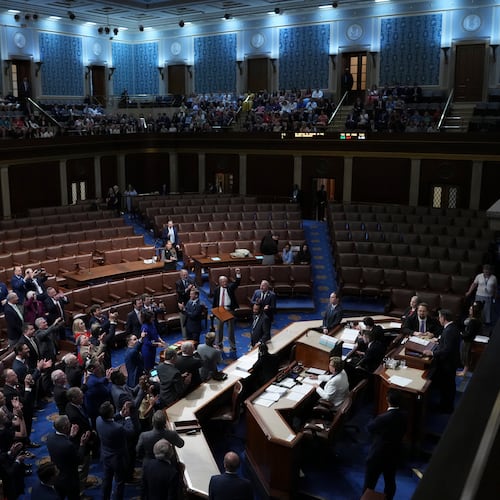For the past 70 years, suburban-style, decentralized development, and its emphasis on private space, has been dominant.
The quality of public space and public life has declined – even in downtowns, where shopping malls, parking lots and highways killed street life in their effort to compete with the suburbs.
But today, that pattern has been reversed. Today, metro Atlanta suburbs are following our revitalized center’s lead.
Just look at the Beltline. Its success has inspired a profusion of trails and greenways throughout the suburbs. Or look at the Tech Square-inspired innovation districts and Ponce City Market-inspired food halls popping up throughout the metro area.
It’s not just about commercial success. Strengthening our cores reinforces togetherness. We’re seeing this play out in revived downtowns, from Duluth to Hampton, and in new town centers, from Smyrna to Senoia.
Planning throughout our region has become much more fine-grained and walkable, thanks, in particular, to the Atlanta Regional Commission’s Livable Centers Initiative program.
This has given us vastly improved public spaces, lively streetscapes, parks and town greens. With their farmers’ markets, concerts, and yoga classes, these places are more “we” than “me.”
Most significantly, we’re thinking differently about underinvested areas. Instead of running away from them, as we did during the heyday of sprawl, we’re running towards them.
Intown, we’re fixing up vacant lots, dilapidated buildings and abandoned rail lines. OTP, we’re retrofitting aging strip malls and outdated office parks. These are great opportunities to meet the demand for walkable urbanism while improving environmental performance.
But it’s causing growing, interconnected problems that we must address. Intown neighborhoods are struggling with gentrification and displacement, while OTP neighborhoods are confronting the suburbanization of poverty.
While we have much to do to increase equity in our residential areas, we are genuinely getting better at retrofitting our underperforming commercial properties. I see three successful strategies at work in metro Atlanta:
- Redevelopment to create more compact, walkable, mixed-use places. A great example is City Springs in Sandy Springs, where a former Target store is now a mixed use civic center anchored by a performing arts center and town green.
- "Re-inhabitation" to provide more community-serving uses. BuHi Walk, for example, will connect the front walkways of strip malls on Buford Highway. This promises a celebration of ethnic businesses' window displays, colorful crosswalks, murals, and lanterns from a diverse array of cultures.
- "Re-greening" to build resilience and promote placemaking. Atlanta is becoming a leader in transforming parking lots and other flood-prone properties into lively stormwater parks like the new Old Fourth Ward and Mims parks. They retain massive amounts of water when needed – while providing amenities that catalyze neighborhood reinvestment.
All of these retrofits are replacing defensive design with welcome signs. Fences, blank walls, and berms are like armor. They send a clear message of distrust. Instead, we’re seeing streets with more windows, seating, trees and art. These visual signals of welcome, trust and a community that cares about its public space deter crime by building social capital, not fear.
But, dispersed centers of welcoming urbanism won’t add up if they aren’t connected and accessible. Our biggest challenge is expanding transportation options and equitable inclusion.
Collectively, we need to figure out how to: make neighborhood improvements without displacement; preserve existing affordable housing and build more of it; plan now for how driverless shuttle buses and robo-taxi fleets can help us achieve the shared mobility futures our communities want.
These are big challenges. They require leadership as well as a culture of trust built through each of our individual actions.
Can we start by building a culture of togetherness in transportation? Can we each agree to share more rides with strangers? Let’s strike up conversations, whether on transit, Lyft line or Uber pool.
Paraphrasing Aristotle, the point of both politics and public space is to teach us how to live well together. I can think of no finer goal for a re-centered metro Atlanta.
About the Author
Keep Reading
The Latest
Featured


